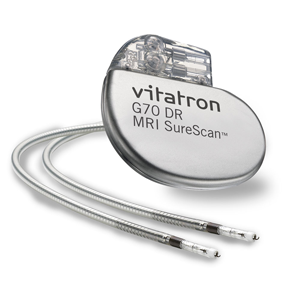Your Pacemaker
How is It Implanted?
Pacing lead placement
For most adults, a lead is usually inserted through a vein and guided into the right ventricle or the right atrium of the heart. This is called an endocardial lead ("endo" means "inside", "cardio" means "heart") or a transvenous lead (because it is inserted through the vein). One or more pacing leads are used, depending on your medical condition.
A Pacing lead outside the heart
Sometimes the lead is attached to the outside of the heart. This is called an epicardial lead ("epi" means outside). An epicardial lead is often used when other surgery is being done and the outside of the heart is easy to reach.
Minimalizing scar tissue
Regardless of whether a lead is placed on the inside or outside of the heart, the location where the lead touches the heart naturally produces an inflammatory response. This response is similar to what is observed when you've scraped your skin; the area around the scrape is red and may result in a scar as your body repairs itself. When a lead is placed in your heart, a similar response occurs. By placing a medication at the tip of this lead, this inflammation is reduced. The special medication placed at the tip is called a steroid. This very tiny amount of steroid (less than 1 mg) is located just at the tip of the electrode. When the lead is placed in (or on) the heart, the medication is released and the build-up of scar tissue between the electrode and the heart tissue is minimized. Reducing the amount of scar tissue helps the pacing system work more efficiently.


